Lefties, righties, and pretty much everybody else with even a passing interest in presidential politics should appreciate The Political Machine 2012. Gameplay consists of compelling boardgame mechanics that will keep you playing one more turn into the wee hours, trying to ram the candidate of your choice into the Oval Office for the next four years. This is one of those light and approachable trifles that sneaks up on you. Before you know it, you've been playing for hours and have somehow managed to make Newt Gingrich palatable to a majority of the voting populace.
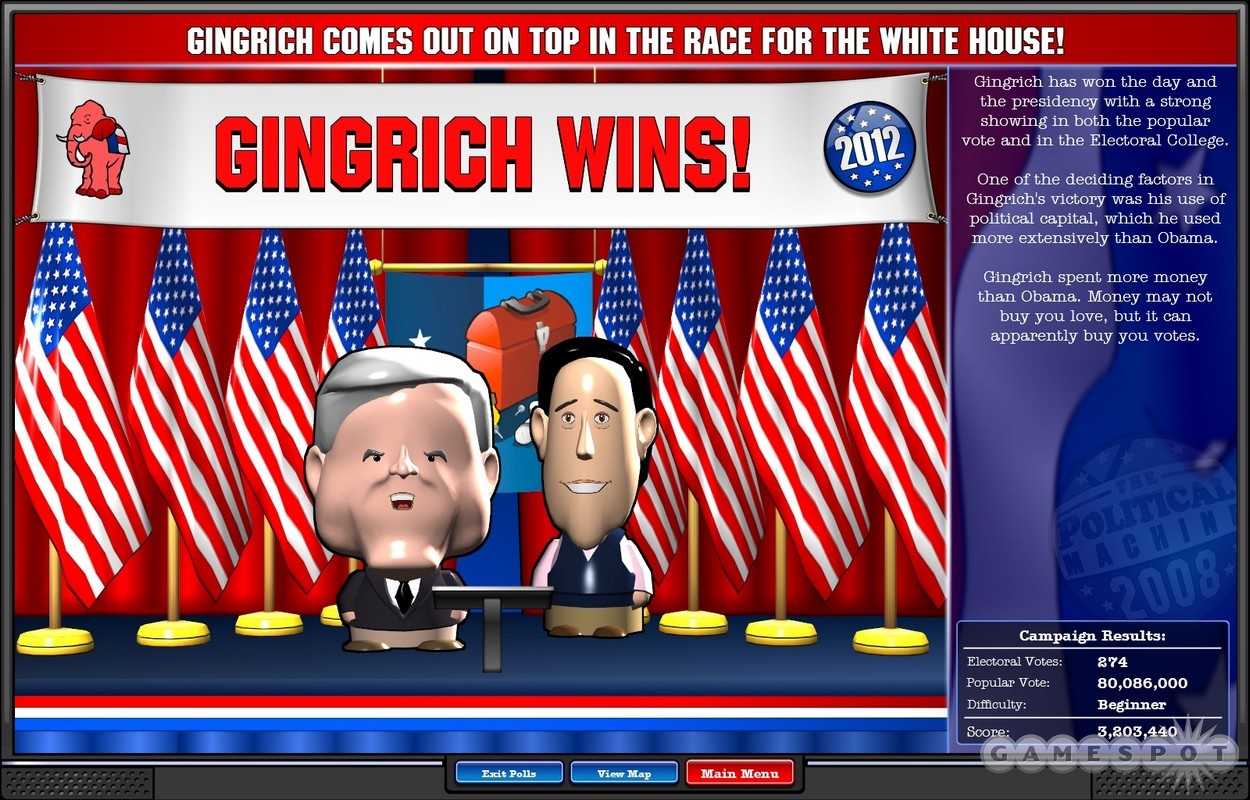
Unfortunately, this franchise did all of the same things back in 2008 for the last presidential election. The updated game is still hard to put down, but the gameplay is a total rehash that does little more than sub in the hot issues of this election cycle and introduce the new big players on the national scene as potential presidents. Oh, and cut out a few features along with dropping a few bugs into the mix.
You could easily classify this 2012 take on The Political Machine as a standalone expansion pack more than a sequel. First off, the price is a very reasonable $10, more in line with an expansion than a full new game. The game looks and sounds almost exactly like its predecessor. Candidates are still shown as goofy little bobblehead dolls that serve as rough caricatures of their real-life inspirations. The US map that serves as the backdrop of the main game screen is dull, and battleground states get so crowded in the later stages of campaigns that you can't see what's going on. It's still charming, though rather utilitarian. There isn't much flair to the design, aside from a few nifty touches like the big ears on the Obama bobblehead, or how the Donald Trump bobblehead looks to be perpetually yelling. Sound effects are similar canned roars and cash-register chings as in the last game, and the music is the same old elevator jazz.
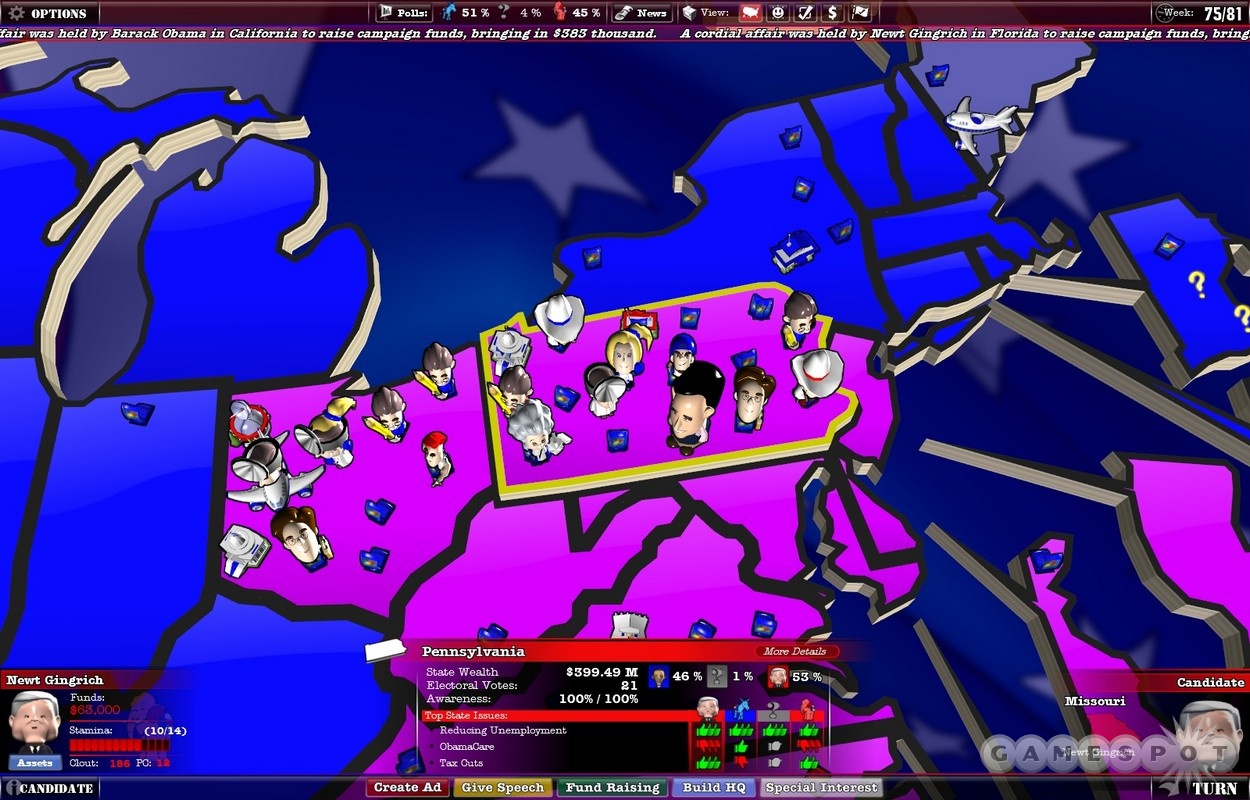
Gameplay follows an "if it ain't broke" philosophy. As in the 2008 game, and in its 2004 ancestor that got the series started, you pick a candidate from either the Republicans or Democrats (sorry, Indies), or create one of your own, and proceed to hit the campaign trail. You can play solo against an astute computer-controlled adversary (even the normal difficulty setting can be challenging depending on the candidates) or go online for multiplayer matches with other human presidential wannabes.
The style of play is very reminiscent of a board game: you complete a set number of actions during each turn, with your movements limited only by the amount of stamina possessed by your candidate. These activities consist of a handful of campaign endeavors. You jet from state to state, give speeches, set up state ad campaigns, hold fundraisers, and build facilities that let you earn money and gain the political clout and capital needed to line up national endorsements and hire sleazy operatives that can skew things behind the scenes.
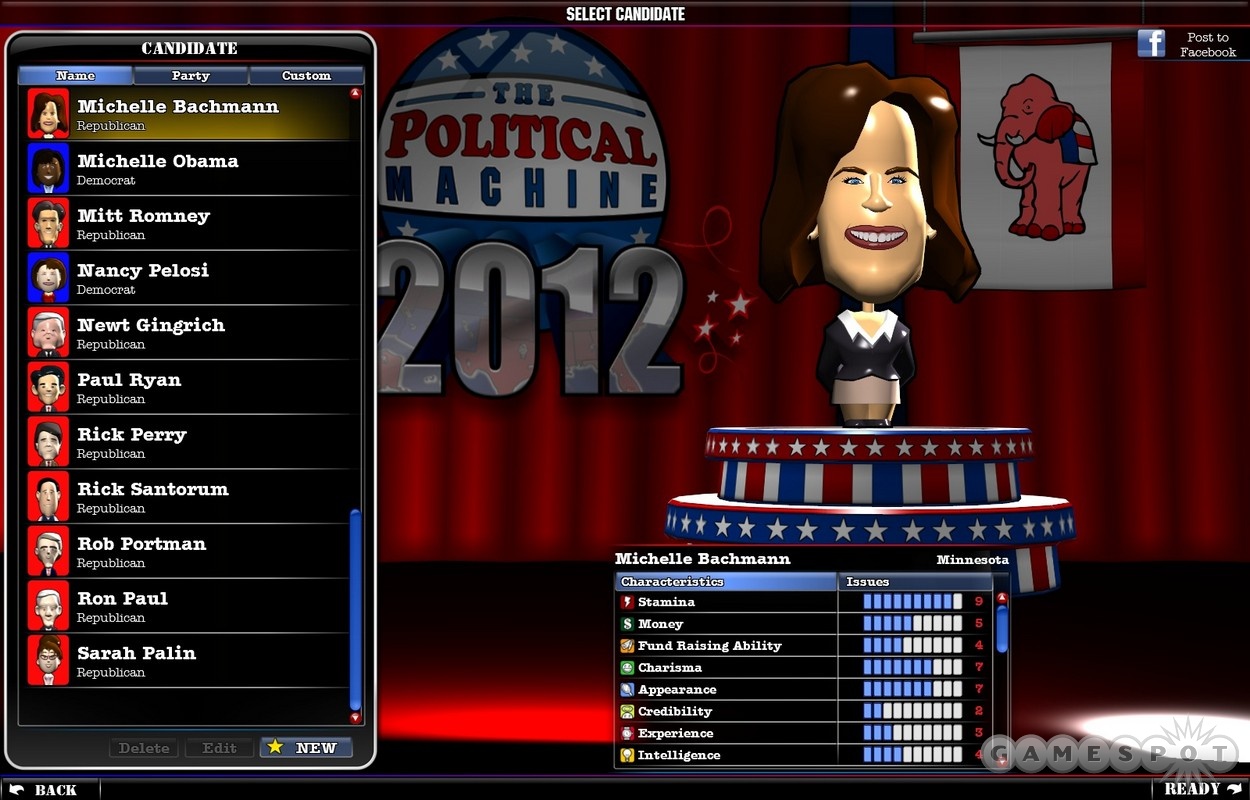
If you are at all into politics, The Political Machine 2012 can be wildly addictive. Elections play out as fairly realistic simulations of real politics, with everything broken down to simple common denominators. You work with the issues of the day, giving speeches and tailoring ad campaigns to hit on your opponent weaknesses and target the issues that will best swing voters your way. You might fly into Iowa and talk up farm subsidies, then soar into California to pontificate about green jobs. Everything can be tailored to be positive or negative. If you want to tout your own love of deficit reduction, you can do so.
Conversely, you can slam your opponent for being a money waster who couldn't care less about bringing down the debt. Everything is scaled for the big picture. Micro-management is dialed down to non-existence. Most of the game is spent going from state to state hammering away on the top issues in each locality through speeches, ads, and dropping in operatives to move the numbers. The end result is a relaxed (if always tense in the closing weeks of the campaign) pick-up-and-play style of game that has you hitting the campaign trail within minutes of wrapping up the game installation.
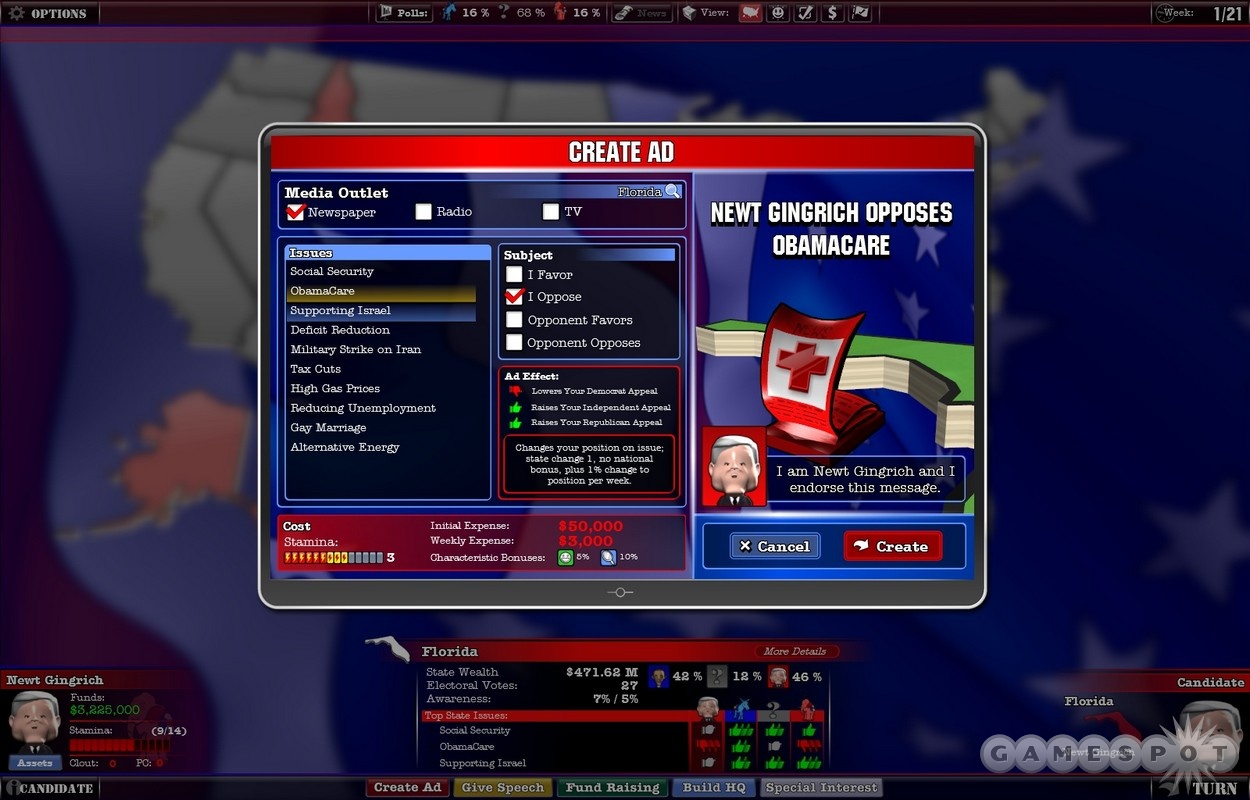
But it is all very, very familiar. The 2012 game is just a facelift on the 2008 model. A few new candidates have been dropped in to better reflect the top names on the circuit today. Mitt Romney makes an appearance, for instance, as do Michelle Obama, Al Franken, Michelle Bachmann, and Newt Gingrich. Strangely, though, historical presidents have been deleted from the roster. So say goodbye to winning in 2012 with Teddy Roosevelt.
The campaign has also been removed, which is a huge loss because this ladder-style progression of challenges to win the White House was one of the most enjoyable parts of both earlier Political Machine games. Fantasy scenarios from 2008 that let you fight an election in Europe or in the alien capital of the evil Drengin Empire (ported over from Stardock's Galactic Civilization franchise) have also been taken out.
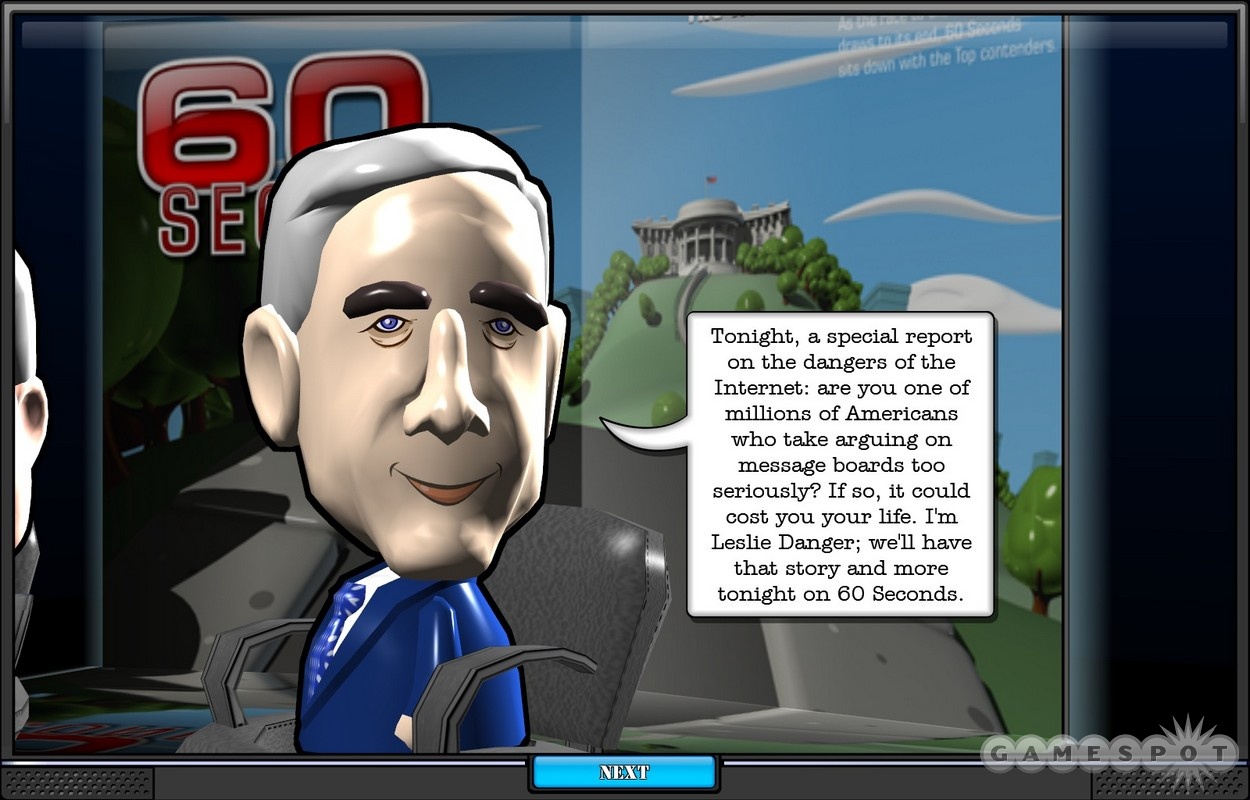
Political issues are the only real additions of substance. Most of the biggest talking points in 2012 have been put in place, so now you're battling over Obamacare, a military strike on Iran, bank bailouts, and so forth. None of this makes any serious difference to the gameplay itself, though. If you have any experience with the 2008 game, you will find that campaigns become quite predictable in short order. Some of the words have changed, but that's about it. Other core components of the game haven't been altered at all. TV interviews, for instance, take place with the same shows and pundits. 60 Seconds interviews are conducted by the spitting image of the late Mike Wallace, and you still chat with Barry King on a talk show, even though the program it's based on is now off the air.
Bugs are another matter. Getting the game to run in full-screen mode, or to scale properly when windowed, can be an unfortunate issue. To get the game screen fully shown, you might need to drop the resolution considerably. This can be worked around, but other bugs have no such ready solution. Crashes might occur, and frame rates frequently slow to a crawl after you have gone a fair number of turns into a campaign, making the game unplayable until you quit and restart.
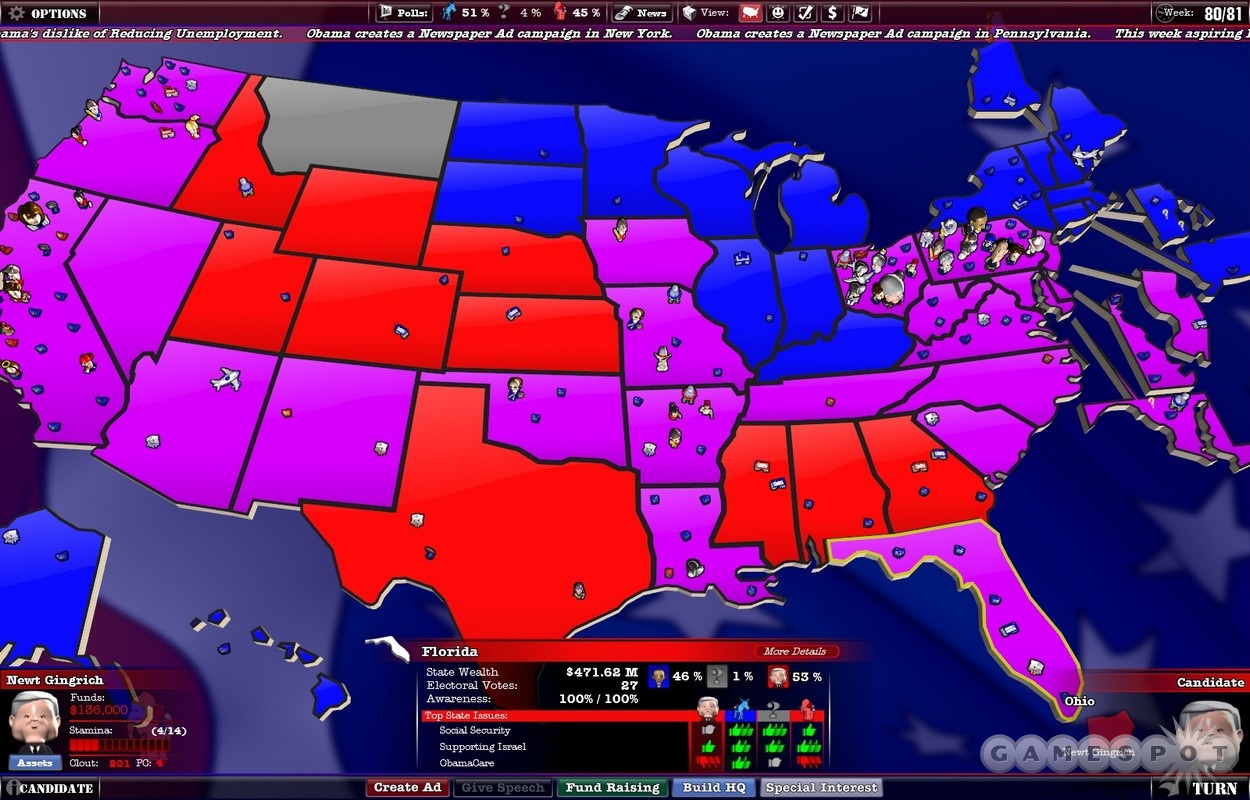
Just as a jaded Beltway insider says every four years, there isn't anything here that you haven't seen before. Gameplay in The Political Machine 2012 is still addictive enough to get at least a few election runs out of you, but the lack of any sort of design evolution since 2008 is disappointing. Stripping out some features and letting quality control lapse to the point that bugs have slipped through into the release code is also annoying. Yet the price is right at just $10, and the selection of new issues and candidates lets you stay current as the race heats up going into the November election.